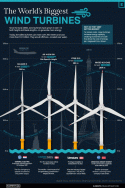China aims to start work on 270GW of pumped storage facilities by 2025
The chairman of the Power Construction Corporation of China (Power China) has said the country plans to begin work on more than 200 pumped hydro plants with a combined generating capacity of 270GW by 2025.
According to the Bloomberg news agency, Ding Yanzhang told the People’s Daily newspaper that the schemes would generate more than all the power stations in Japan. They would also raise China’s installed capacity by around 10% and increase the world’s energy storage capacity by around 170%.
If these schemes go ahead, they will mark a striking increase in what was proposed in China’s five-year plan for 2021-25. There it was envisaged that 62GW of pumped hydro would enter service and work would begin on 60GW more.
In January, the State Grid Corporation of China switched on the world’s largest pumped-hydro station in Hebei Province, the 3.6GW Fengning facility.
In February, Power China held the first meeting of its “supply chain assurance working group”, formed to support the ramping up of pumped storage schemes. The company notes on its website that the aim is to ensure new pumped storage projects have “safe, reliable, strong and efficient supply chains”.
Power China is a state-owned company made up of 779 subsidiaries, including well known companies such as SinoHydro. It is presently the fifth largest contractor in the world.
Pumped storage is a way of storing energy in its potential form. The idea is to pair it with wind or solar plants, and use their excess generation to pump water from a lower into a higher reservoir, creating a “water battery”.
According to the International Hydropower Association, pumped storage accounted for 158GW of storage in 2019, or 94% of world energy storage capacity. Recent studies by the association suggest there are more than 600,000 non-river sites that can be exploited in the future.
China is also progressing plans to deploy newer forms of energy storage such as lithium-ion batteries, with the country’s largest grid saying it hopes to have 100GW of such capacity available by 2030.
globalconstructionreview.com/china-aims-to-start-work-on-270gw-of-pumped-storage-facilities-by-2025/

